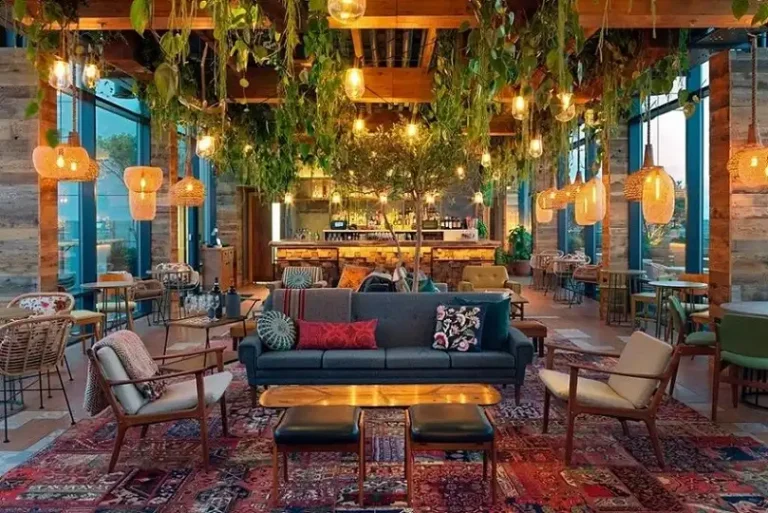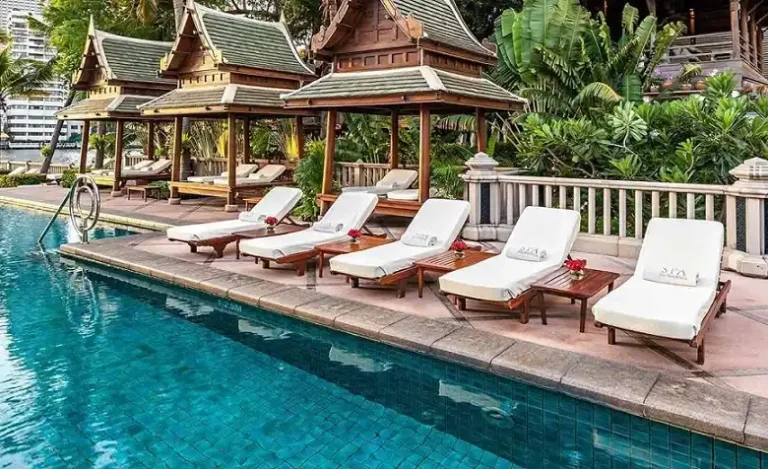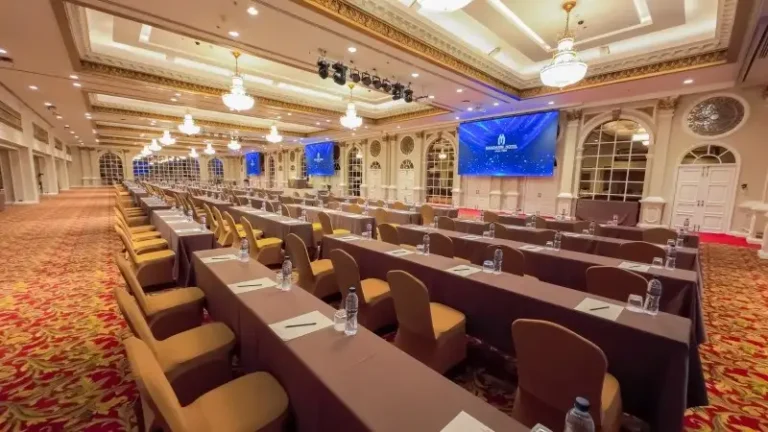
Bangkok Hotel Executives: A Bold Legacy Begins with a Dream
In an ambitious and unprecedented move, father and son duo Narit and Chintat Chia-Apar—well-known for their success in Thailand’s seafood export industry—have boldly transitioned into luxury hospitality, unveiling one of Pattaya’s most impressive new resort properties, the Andaz Pattaya Jomtien Beach. Built on a sprawling 15-acre family estate once home to royalty and towering rain trees, this resort is now setting new benchmarks in both design and pricing on Thailand’s eastern seaboard.

Just a year into operations, Andaz Pattaya has stunned the market. Despite its Jomtien location, a few kilometers from Pattaya city center, the resort commands an average nightly rate of 10,900 baht (approximately USD 297), surpassing even legacy properties like the Royal Cliff’s all-suite wing, Hilton Pattaya, and Centara Grand Mirage Beach. This Bangkok Hotel Executives news report highlights how a meticulously handcrafted concept and a refusal to compromise on authenticity can push boundaries and redefine the luxury landscape—even for first-time hoteliers.
From Shrimp to Suites A Vision Rooted in Legacy
Narit Chia-Apar, founder of Seafresh Industry, one of Thailand’s largest exporters of frozen shrimp, did not enter the hotel business to merely compete. Instead, his motivations were deeply personal. “It’s a legacy,” he shared in an earlier interview. With no plans for resale or divestment, he invested over $150 million into developing the 204-room resort, excluding land he purchased two decades ago. The scale of investment nearly matches Seafresh’s annual revenue—a testament to the seriousness and sentimental value placed on the project.
The Andaz Pattaya now stands where three traditional Thai houses once welcomed royalty and prominent guests. Rather than razing the land to maximize room count or profitability, Chia-Apar preserved its natural integrity. Massive rain trees, including five planted by royal guests, and groves of old banyan trees became sacred design anchors. The result is a forested sanctuary with a spirit of place that few modern resorts can replicate.
Sculpting Nature into Luxury
Chia-Apar was unyielding in his commitment to protect the estate’s flora, a principle that led to countless redesigns and delays during construction. “You’d be building and suddenly hit roots. We’d stop, relocate, redesign. It was the biggest challenge,” he recounted. But the sacrifice paid off: the resort’s serene landscape of koi ponds, brooks, and winding paths creates a near-mystical ambiance, elevated by buildings that curve and bend around ancient trunks.
His son, Chintat, who serves as Vice President of developer Chartered Square, was instrumental in executing this vision. “The rooms could have been doubled,” he said. “But this wasn’t about volume. It was about soul.”
The design partnership with Thailand’s A49 Architects was more than strategic—it was symbiotic. A49 noted that the property’s trees didn’t just coexist with the design; they dictated it. Influences from Thai craftsmanship and traditional materials abound: rattan ceiling work woven by artisans from over ten villages, wooden detailing sourced from local forests, and furnishings that far exceeded brand requirements, from Grohe premium bathtubs to Siam Feather’s plushest pillows.
Why Andaz and Not Grand Hyatt
Originally, the family envisioned building a Grand Hyatt, but Hyatt’s team offered them something more fitting: the Andaz brand—an exclusive line of luxury lifestyle hotels steeped in local culture. “They’re picky about who gets it,” said Narit with a smile. “It gave us creative freedom.”
Andaz, a boutique collection under the Hyatt umbrella, thrives on cultural authenticity and immersive design. Its global footprint is small but strategic, with properties in Singapore, Tokyo, Bali, Delhi, and Seoul. New additions are planned for Bangkok, Taipei, and Hong Kong. According to Hyatt’s Sarah Leow, the demand for experiential, place-based luxury is rapidly growing.
What sealed the deal was Hyatt’s reputation for culinary excellence and human-centered service—two values deeply shared by the Chia-Apars. “Food and hospitality are everything,” said Narit, who proudly identifies as a foodie. “And Hyatt’s F&B concepts are some of the best.”
High Risk High Reward
Despite a fondness for grand ideas, Narit is no stranger to business calculations. He recognized the strategic timing of launching in the Eastern Economic Corridor (EEC)—a government-backed zone aimed at transforming the Chonburi region into a global manufacturing and investment hub. “If we didn’t develop this land now, it would be a missed opportunity,” he said.
The hotel was designed not just for leisure travelers, but for a growing demographic of high-spending visitors, including corporate executives and international investors attracted by the EEC. This vision extends beyond just Andaz Pattaya. Narit also owns the Chee Chan Golf Course, an 18-hole championship layout located just 10 kilometers away, further strengthening the region’s appeal to upscale clientele.
Still, it hasn’t been an entirely smooth ride. “One of my biggest concerns was not knowing what rates we could command,” he admitted. “We had no reference—this is a new category in a new location.”
As it turns out, his fears were unfounded. With occupancy targets set just above 60% for 2025, the hotel is outperforming expectations. Villas and suites, which account for a sizable portion of the inventory, frequently sell out before standard rooms. Some of the top-tier accommodations like the six-bedroom Heritage House—a transformation of Narit’s former seaside residence—fetch over $10,000 per night.
Design With Purpose A Family Effort
While Narit brought the passion and vision, Chintat brought practicality and strategic foresight. Together, they devised a room layout strategy that maximized land use while leveraging the best views for premium categories. “Seafront rooms are always easy to sell,” said Chintat. “It’s the ones at the back that need design magic.”
There are 18 different room categories at the resort, each tailored for different traveler profiles. From beachfront suites to direct pool-access rooms, the product mix ensures broad appeal while maintaining exclusivity.
The duo is also hands-on with operations. General Manager Ranjeet Rajebhosale, a seasoned hotelier known for his warmth and humility, reflects the family’s values. “He’s a perfect cultural fit,” said Narit. “He leads with heart, not ego.”
Crafting a Timeless Experience Not Just a Business
When asked to rate his satisfaction with the project, Narit paused and answered “8.5 out of 10.” The only shortfall? The elusive challenge of staffing and maintaining high service standards. “We still have work to do there,” he said, ever the perfectionist.
Yet despite operational hurdles and the high cost of quality, Narit expects to recoup his investment within a decade. “This is no longer a gamble. We’ve created something truly special,” he added.
For the Chia-Apar family, Andaz Pattaya is not just a hotel—it is a monument to passion, pride, and persistence. Their story underscores an emerging trend among Thailand’s new-generation hoteliers: visionaries who fuse personal heritage with cutting-edge hospitality to create unforgettable guest experiences.
And for travelers, the message is clear—Jomtien is no longer just an alternative to Pattaya. It’s quickly becoming the main event.
For the latest on Leading Thailand Hotel Owners and Executives, keep on logging to Bangkok Hotel News.
You May Also Like:
Amora Dynasty Rising, Young Thai Hotelier Charts Bold New Path for Family Brand







